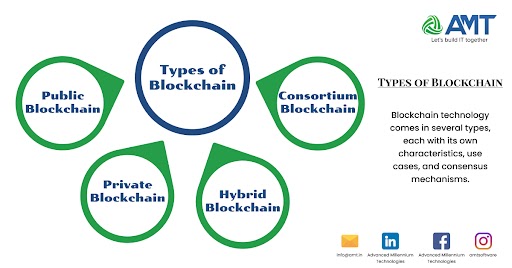Blockchain is a distributed ledger technology that enables secure, transparent, and tamper-resistant record-keeping of data. It gained prominence as the underlying technology for cryptocurrencies, starting with Bitcoin in 2009. However, its applications extend far beyond digital currencies. Here are key concepts related to blockchain:
- Decentralization: Blockchain operates on a decentralized network of computers (nodes) that work together to validate and record transactions. This decentralization makes it resistant to censorship and tampering.
- Blocks and Chains: Transactions are grouped into blocks, and each block contains a cryptographic hash of the previous block, creating a chain of blocks. This ensures the integrity of the entire transaction history.
- Consensus Mechanisms: To agree on the state of the blockchain, nodes in the network use consensus mechanisms. The most common method is proof-of-work (used by Bitcoin), where nodes compete to solve complex mathematical problems to validate transactions and create new blocks. Other consensus mechanisms include proof-of-stake and delegated proof-of-stake.
- Cryptographic Hash Functions: These functions play a crucial role in securing the blockchain. They generate unique, fixed-size strings of characters (hashes) for each block, making it computationally infeasible to alter past blocks without changing subsequent ones.
- Smart Contracts: These are self-executing contracts with the terms of the agreement directly written into code. Smart contracts run on the blockchain and automatically execute when predefined conditions are met. Ethereum is a notable blockchain platform supporting smart contracts.
- Public vs. Private Blockchains: Public blockchains, like Bitcoin and Ethereum, are open to anyone, while private blockchains restrict access to a specific group of participants. Private blockchains are often used by enterprises for internal purposes.
- Cryptocurrencies: While blockchain technology itself is independent of cryptocurrencies, they are closely associated. Cryptocurrencies use blockchain to enable secure, decentralized transactions. Examples include Bitcoin (BTC), Ethereum (ETH), and Ripple (XRP).
- DApps (Decentralized Applications): These are applications built on top of blockchain platforms. They operate on a peer-to-peer network and often use smart contracts for automation.
- Challenges: Despite its potential, blockchain faces challenges such as scalability, energy consumption (especially in proof-of-work systems), regulatory uncertainty, and the need for widespread adoption.
Blockchain technology has applications in various industries, including finance, supply chain, healthcare, and more, as it provides a transparent and secure way to record and verify transactions.
Blockchain technology comes in several types, each with its own characteristics, use cases, and consensus mechanisms. Here are some of the main types of blockchains:
- Public Blockchains:
- Permissionless: Anyone can join the network, participate in the consensus process, and validate transactions.
- Decentralized: No single entity has control over the network, making it resistant to censorship.
- Examples: Bitcoin, Ethereum.
- Private Blockchains:
- Permissioned: Participants need approval to join the network, and access to the blockchain is restricted.
- Centralized or Consortium: Controlled by a single entity or a group of known entities, allowing for more control and privacy.
- Examples: Hyperledger Fabric, Corda.
- Consortium Blockchains:
- Similar to private blockchains but shared among a group of organizations that form a consortium.
- Allows for a more distributed and decentralized network compared to fully private blockchains.
- Example: R3 Corda (often used in consortium settings).
- Hybrid Blockchains:
- Combines elements of both public and private blockchains.
- Allows for customization of privacy and access levels based on specific use cases.
- Example: Dragonchain.
- Permissioned Blockchains:
- Participants need permission to join and contribute to the consensus process.
- Provides more control and privacy compared to public blockchains.
- Often used in enterprise settings.
- Smart Contract Platforms:
- Blockchains that support the execution of smart contracts, which are self-executing contracts with the terms of the agreement directly written into code.
- Example: Ethereum, Binance Smart Chain.
- Cryptocurrency Platforms:
- Blockchains designed primarily for the creation and transfer of digital currencies.
- Often includes features for token creation and management.
- Example: Ripple (XRP) for cross-border payments.
- Blockchain-as-a-Service (BaaS):
- Cloud-based blockchain services that allow users to develop, host, and deploy their own blockchain applications without the need to maintain a full blockchain infrastructure.
- Example: Microsoft Azure Blockchain, IBM Blockchain Platform.
- Distributed Ledger Technology (DLT):
- While not all DLTs are strictly blockchains, they share some similarities. DLT refers to a broader category of technologies that include various decentralized and distributed consensus mechanisms.
- Example: Hashgraph.
These types can overlap, and the distinction between them can sometimes be blurred as technologies evolve and new implementations emerge. Additionally, various blockchain projects may incorporate elements from multiple types to meet specific requirements.
Above is a brief about the Types of Blockchain. Watch this space for more updates on the latest trends in Technology.
